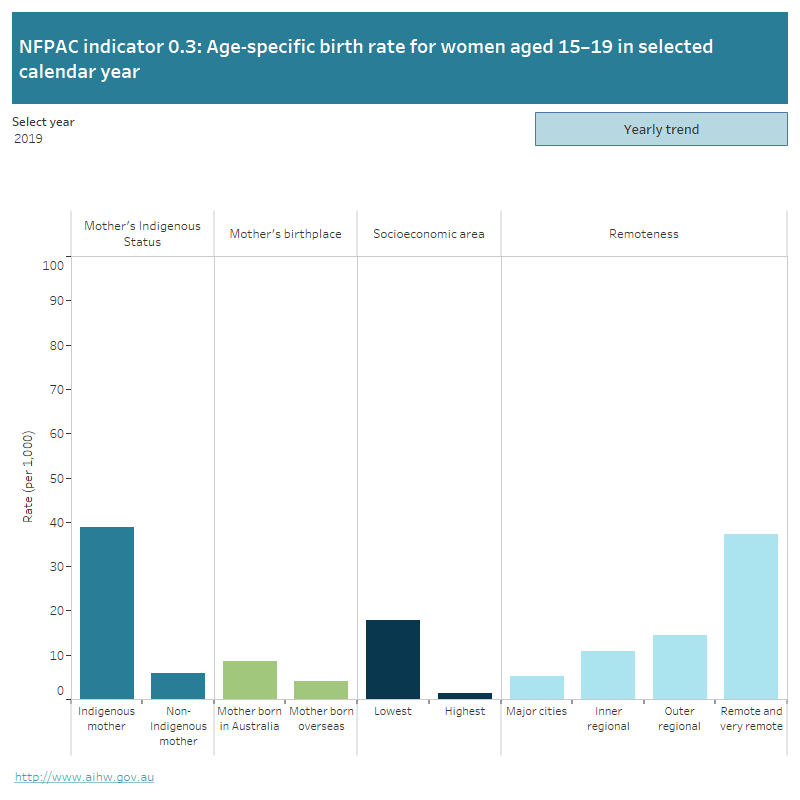0.3 Teenage births
Teenage motherhood is associated with poorer health and wellbeing outcomes for both the mother and her children. Teenage mothers face increased risk of physical and psychological difficulties while having their children. They are also more likely to be socioeconomically disadvantaged and to have lower levels of education, and are less likely to attend antenatal classes, than older mothers (AIHW 2018).
Trend data: For all indicator displays, the yearly trend is limited to indicators with 3 or more years (including the current year) of comparable time series data. To see the trend click on “Yearly Trend” button on the display. Where 3 or more years of comparable data including the most recent year is not available, a “No time series data” message is shown on the display.
The first figure is a bar graph showing the age-specific birth rate for women aged 15–19, by mother’s Indigenous status, mother’s birthplace, socioeconomic area and remoteness. Data can be displayed for select years, 2009 to 2019.
The second figure is a line graph showing the age-specific birth rate for women aged 15–19, 2012 to 2019. Data can be displayed by mother’s Indigenous status, mother’s birthplace, socioeconomic area and remoteness.

Source: AIHW National Perinatal Data Collection
See the supplementary data tables for further information and footnotes about these data.
For further information on teenage births see Australia’s mothers and babies reporting.
References
AIHW (2018) Teenage mothers in Australia 2015, AIHW, Australian Government.
Indicator technical specifications
The information below provides technical specifications for the summary indicator data presented in the quick reference guide.
| Definition | Data source | |
|---|---|---|
| Numerator |
Number of live births to women aged less than 20 years in the reference period |
AIHW National Perinatal Data Collection |
| Denominator | Female estimated resident population aged 15-19 years at 30 June | AIHW National Perinatal Data Collection |
Explanatory notes
The indicator numerator reflects the number of births, not the number of mothers. Some mothers may have had multiple births during the reference period.
Mother’s age is at the time of birth. Due to the small number of births occurring among women aged less than 15 years, births to mothers aged under 15 years are included in the numerator but not the denominator.
The teenage birth rate is distinct from the teenage pregnancy rate. The birth rate includes only live births and is therefore lower than the pregnancy rate, which would include stillbirths, miscarriages and terminations.


